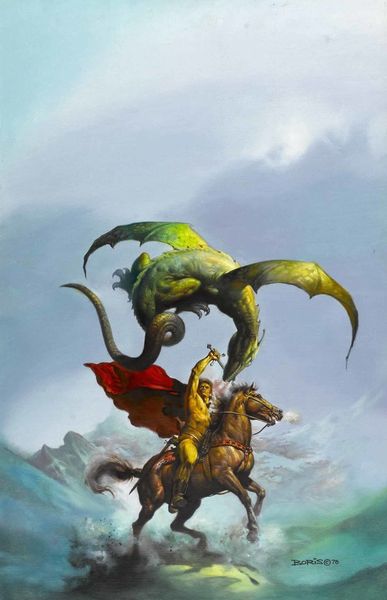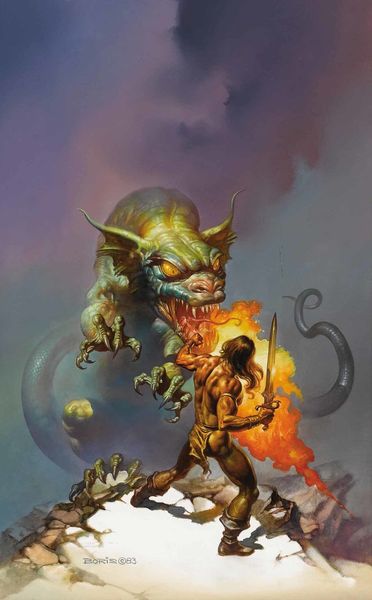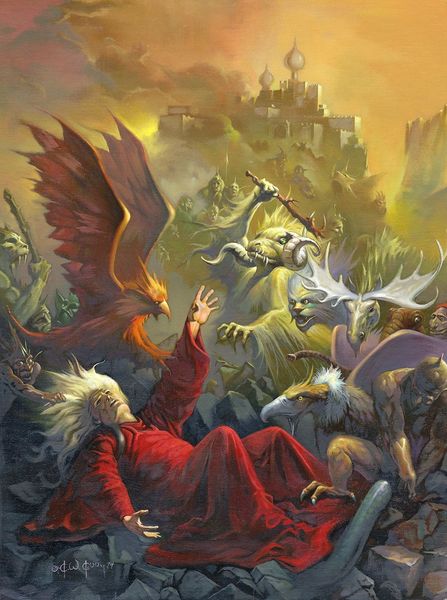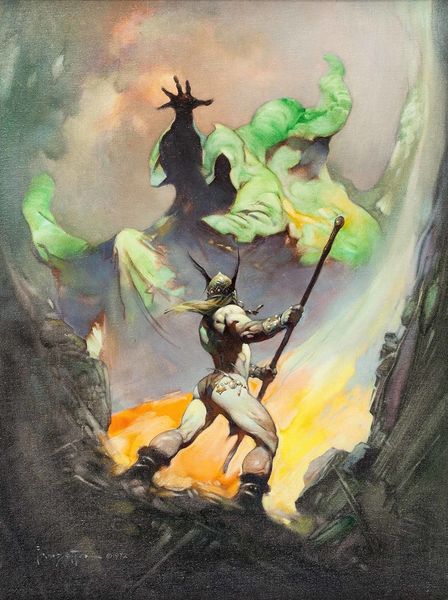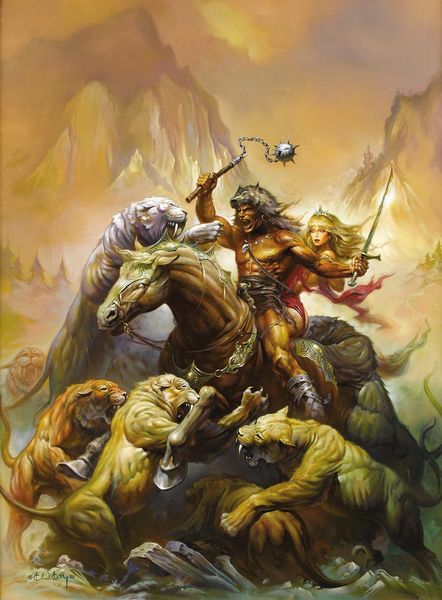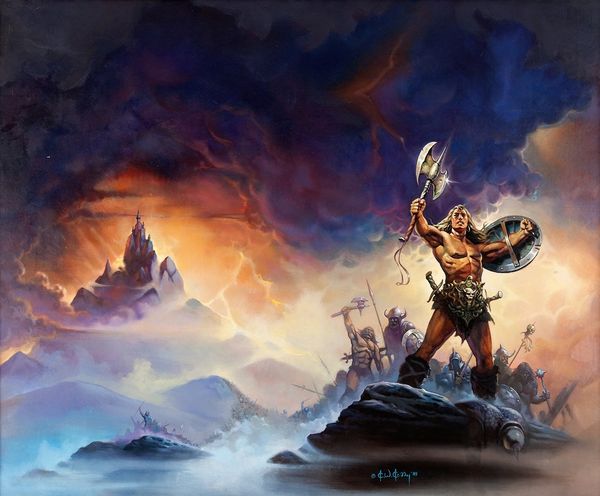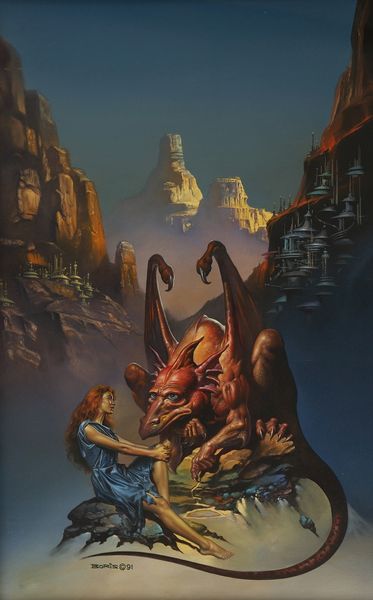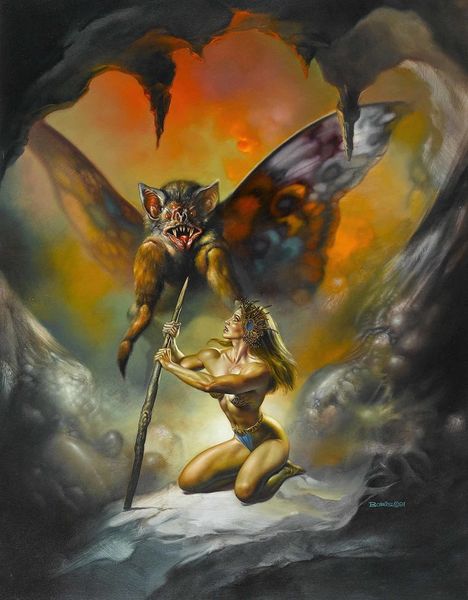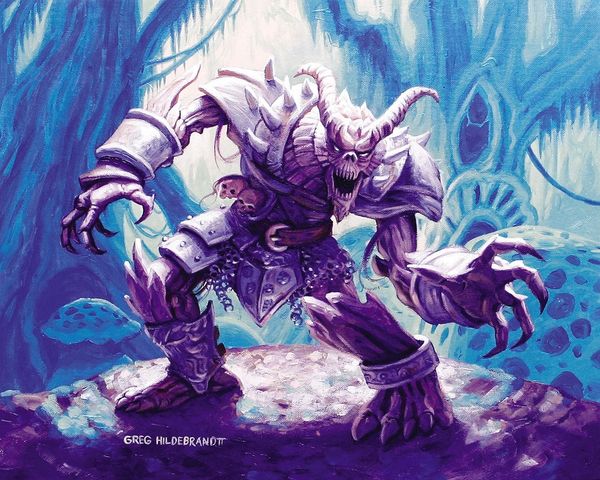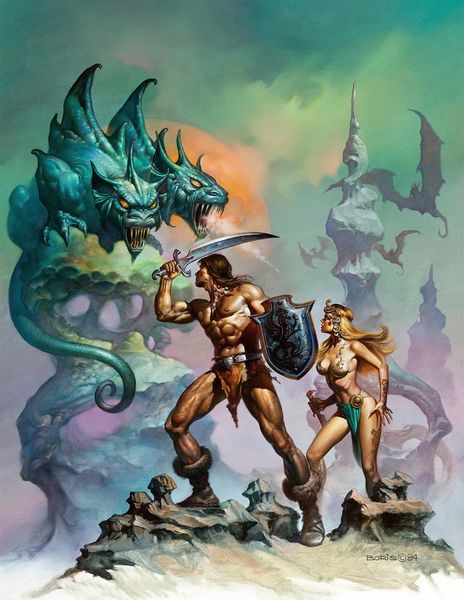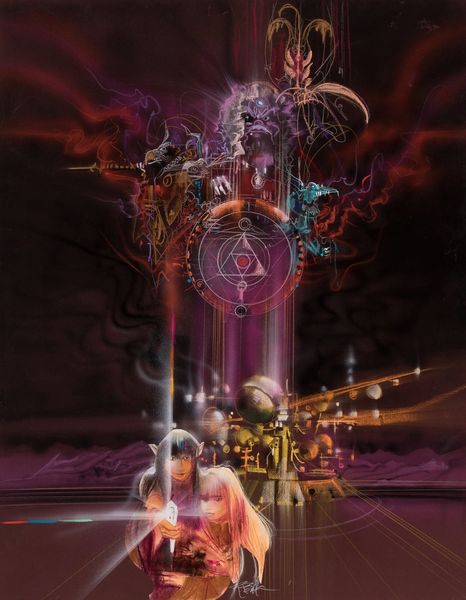
painting, oil-paint
#
narrative-art
#
fantasy art
#
painting
#
oil-paint
#
fantasy-art
#
figuration
#
genre-painting
Copyright: Modern Artists: Artvee
Editor: This is "Dark Castle, White Horse Cover," an oil painting by Ken Kelly from 1986. It’s definitely giving off some dark fantasy vibes. I’m immediately struck by how theatrical it is, almost like a stage set. The harsh lighting focuses our attention on this skeletal figure on the throne. What do you see in this piece from a historical and social context? Curator: Well, seeing as this image functioned as a book cover, let's consider how the artist plays with the established tropes of fantasy illustration. This imagery connects with anxieties of the period – think about the Reagan era, anxieties about the decaying social safety nets and the fear of nuclear war. Do you think the throne could be read as a commentary on power structures? Editor: That's interesting. I hadn’t considered the Reagan era context. Thinking about the throne, it seems to be not only a symbol of power but also of corruption and decay. It’s literally made of skulls and bones. It contrasts starkly with the adventurer who seems poised for action. Is this a deliberate critique or just playing into existing popular culture narratives? Curator: Perhaps both. Artists don’t create in a vacuum. This work taps into familiar archetypes—the hero's quest, the corrupt ruler—which allows it to be readily consumed, bought, and marketed. Consider also how this work relies on specific ideas of masculinity and heroism dominant at the time. The artist positions viewers, largely male, as active participants in this heroic narrative. Do you see anything subversive in that dynamic? Editor: I'm not sure it is inherently subversive, but by highlighting those tropes, we can at least become more aware of them and question the power structures that they are reinforcing. Curator: Exactly. By examining art through a historical and social lens, we can start unpacking the complex relationship between popular imagery, power, and society. Editor: This has completely changed how I view this painting! I will remember to question the social context of all works of art, to better appreciate their narrative, and ultimately their social significance.
Comments
No comments
Be the first to comment and join the conversation on the ultimate creative platform.
